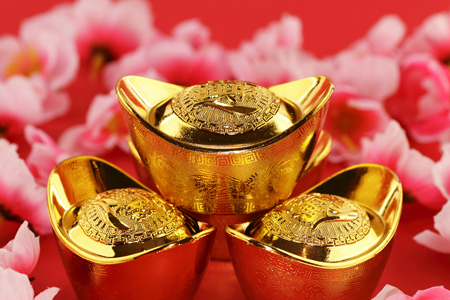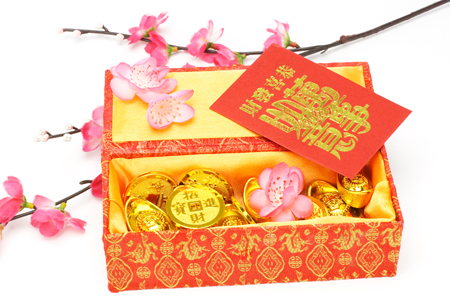Every
February, across the country, candy, flowers, and gifts are exchanged between
loved ones, all in the name of St. Valentine. But who is this mysterious saint
and why do we celebrate this holiday? The history of Valentine's Day — and its
patron saint — is shrouded in mystery. But we do know that February has long
been a month of romance. St. Valentine's Day, as we know it today, contains
vestiges of both Christian and ancient Roman tradition. So, who was Saint
Valentine and how did he become associated with this ancient rite? Today, the
Catholic Church recognizes at least three different saints named Valentine or
Valentinus, all of whom were martyred.
One legend contends that Valentine was a priest who served during the third century in Rome. When Emperor Claudius II decided that single men made better soldiers than those with wives and families, he outlawed marriage for young men — his crop of potential soldiers. Valentine, realizing the injustice of the decree, defied Claudius and continued to perform marriages for young lovers in secret. When Valentine's actions were discovered, Claudius ordered that he be put to death.
Other stories suggest that Valentine may have been killed for attempting to help Christians escape harsh Roman prisons where they were often beaten and tortured.
According to one legend, Valentine actually sent the first 'valentine' greeting himself. While in prison, it is believed that Valentine fell in love with a young girl — who may have been his jailor's daughter — who visited him during his confinement. Before his death, it is alleged that he wrote her a letter, which he signed 'From your Valentine,' an expression that is still in use today. Although the truth behind the Valentine legends is murky, the stories certainly emphasize his appeal as a sympathetic, heroic, and, most importantly, romantic figure. It's no surprise that by the Middle Ages, Valentine was one of the most popular saints in England and France.
While some believe that Valentine's Day is celebrated in the middle of February to commemorate the anniversary of Valentine's death or burial — which probably occurred around 270 A.D — others claim that the Christian church may have decided to celebrate Valentine's feast day in the middle of February in an effort to 'christianize' celebrations of the pagan Lupercalia festival. In ancient Rome, February was the official beginning of spring and was considered a time for purification. Houses were ritually cleansed by sweeping them out and then sprinkling salt and a type of wheat called spelt throughout their interiors. Lupercalia, which began at the ides of February, February 15, was a fertility festival dedicated to Faunus, the Roman god of agriculture, as well as to the Roman founders Romulus and Remus.
To begin the festival, members of the Luperci, an order of Roman priests, would gather at the sacred cave where the infants Romulus and Remus, the founders of Rome, were believed to have been cared for by a she-wolf or lupa. The priests would then sacrifice a goat, for fertility, and a dog, for purification.
One legend contends that Valentine was a priest who served during the third century in Rome. When Emperor Claudius II decided that single men made better soldiers than those with wives and families, he outlawed marriage for young men — his crop of potential soldiers. Valentine, realizing the injustice of the decree, defied Claudius and continued to perform marriages for young lovers in secret. When Valentine's actions were discovered, Claudius ordered that he be put to death.
Other stories suggest that Valentine may have been killed for attempting to help Christians escape harsh Roman prisons where they were often beaten and tortured.
According to one legend, Valentine actually sent the first 'valentine' greeting himself. While in prison, it is believed that Valentine fell in love with a young girl — who may have been his jailor's daughter — who visited him during his confinement. Before his death, it is alleged that he wrote her a letter, which he signed 'From your Valentine,' an expression that is still in use today. Although the truth behind the Valentine legends is murky, the stories certainly emphasize his appeal as a sympathetic, heroic, and, most importantly, romantic figure. It's no surprise that by the Middle Ages, Valentine was one of the most popular saints in England and France.
While some believe that Valentine's Day is celebrated in the middle of February to commemorate the anniversary of Valentine's death or burial — which probably occurred around 270 A.D — others claim that the Christian church may have decided to celebrate Valentine's feast day in the middle of February in an effort to 'christianize' celebrations of the pagan Lupercalia festival. In ancient Rome, February was the official beginning of spring and was considered a time for purification. Houses were ritually cleansed by sweeping them out and then sprinkling salt and a type of wheat called spelt throughout their interiors. Lupercalia, which began at the ides of February, February 15, was a fertility festival dedicated to Faunus, the Roman god of agriculture, as well as to the Roman founders Romulus and Remus.
To begin the festival, members of the Luperci, an order of Roman priests, would gather at the sacred cave where the infants Romulus and Remus, the founders of Rome, were believed to have been cared for by a she-wolf or lupa. The priests would then sacrifice a goat, for fertility, and a dog, for purification.
The boys
then sliced the goat's hide into strips, dipped them in the sacrificial blood
and took to the streets, gently slapping both women and fields of crops with
the goathide strips. Far from being fearful, Roman women welcomed being touched
with the hides because it was believed the strips would make them more fertile
in the coming year. Later in the day, according to legend, all the young women
in the city would place their names in a big urn. The city's bachelors would
then each choose a name out of the urn and become paired for the year with his
chosen woman. These matches often ended in marriage. Pope Gelasius declared
February 14 St. Valentine's Day around 498 A.D. The Roman 'lottery' system for
romantic pairing was deemed un-Christian and outlawed. Later, during the Middle
Ages, it was commonly believed in France and England that February 14 was the
beginning of birds' mating season, which added to the idea that the middle of
February — Valentine's Day — should be a day for romance. The oldest known
valentine still in existence today was a poem written by Charles, Duke of
Orleans to his wife while he was imprisoned in the Tower of London following
his capture at the Battle of Agincourt. The greeting, which was written in
1415, is part of the manuscript collection of the British Library in London,
England. Several years later, it is believed that King Henry V hired a writer
named John Lydgate to compose a valentine note to Catherine of Valois.
In Great Britain, Valentine's Day began to be popularly celebrated around the seventeenth century. By the middle of the eighteenth century, it was common for friends and lovers in all social classes to exchange small tokens of affection or handwritten notes. By the end of the century, printed cards began to replace written letters due to improvements in printing technology. Ready-made cards were an easy way for people to express their emotions in a time when direct expression of one's feelings was discouraged. Cheaper postage rates also contributed to an increase in the popularity of sending Valentine's Day greetings. Americans probably began exchanging hand-made valentines in the early 1700s. In the 1840s, Esther A. Howland began to sell the first mass-produced valentines in America.
According to the Greeting Card Association, an estimated one billion valentine cards are sent each year, making Valentine's Day the second largest card-sending holiday of the year. (An estimated 2.6 billion cards are sent for Christmas.)
Approximately 85 percent of all valentines are purchased by women. In addition to the United States, Valentine's Day is celebrated in Canada, Mexico, the United Kingdom, France, and Australia. Valentine greetings were popular as far back as the Middle Ages (written Valentine's didn't begin to appear until after 1400), and the oldest known Valentine card is on display at the British Museum. The first commercial Valentine's Day greeting cards produced in the U.S. were created in the 1840s by Esther A. Howland. Howland, known as the Mother of the Valentine, made elaborate creations with real lace, ribbons and colorful pictures known as "scrap".
In Great Britain, Valentine's Day began to be popularly celebrated around the seventeenth century. By the middle of the eighteenth century, it was common for friends and lovers in all social classes to exchange small tokens of affection or handwritten notes. By the end of the century, printed cards began to replace written letters due to improvements in printing technology. Ready-made cards were an easy way for people to express their emotions in a time when direct expression of one's feelings was discouraged. Cheaper postage rates also contributed to an increase in the popularity of sending Valentine's Day greetings. Americans probably began exchanging hand-made valentines in the early 1700s. In the 1840s, Esther A. Howland began to sell the first mass-produced valentines in America.
According to the Greeting Card Association, an estimated one billion valentine cards are sent each year, making Valentine's Day the second largest card-sending holiday of the year. (An estimated 2.6 billion cards are sent for Christmas.)
Approximately 85 percent of all valentines are purchased by women. In addition to the United States, Valentine's Day is celebrated in Canada, Mexico, the United Kingdom, France, and Australia. Valentine greetings were popular as far back as the Middle Ages (written Valentine's didn't begin to appear until after 1400), and the oldest known Valentine card is on display at the British Museum. The first commercial Valentine's Day greeting cards produced in the U.S. were created in the 1840s by Esther A. Howland. Howland, known as the Mother of the Valentine, made elaborate creations with real lace, ribbons and colorful pictures known as "scrap".
เมื่อถึงวันที่ 14 กุมภาพันธ์ของทุกๆ ปี
จะมีหนุ่มสาวหรือคนบางกลุ่มนิยมส่งดอกกุหลาบสีแดง
หรือบัตรรูปหัวใจให้แก่กันและกันซึ่งเป็นเครื่องหมายแสดงเจตนารมณ์ของความ
รักความเข้าใจต่อกัน วันวาเลนไทน์ ธรรมเนียมฝรั่งเขาส่งบัตรหรือของขวัญเล็กๆน้อยๆ
ไปให้แก่คนที่เขารักโดยไม่บอกชื่อผู้ส่ง ซึ่งจะมาจากใครก็ได้
ตามประวัติกล่าวว่า วันนี้เป็นวันมรณภาพของนักบุญในศาสนาคริสต์ท่านหนึ่งชื่อว่า เซนต์วาเลนไทน์ ท่านผู้นี้ถูกพวกโรมันจับลงโทษถึงแก่ความตายในสมัยพระเจ้าจักรพรรดิคลอดิอุ สที่ 2 ก่อนคริสต์ศักราช 269 ปี เนื่องจากท่านเป็นชาวโรมัน แต่ไปนับถือศาสนาคริสต์ และได้เข้าบวชอยู่ในศาสนานั้น ชื่อว่า วาเลนตินุส (VALENTINUS) ในสมัยนั้น ประชาชนชาวโรมันนับถือศาสนาของชาวโรมันอีกศาสนาหนึ่ง ซึ่งมีพระผู้เป็นเจ้าและเทวดาหลายองค์ มีโบสถ์วิหารสำหรับพิธีบูชามีสมณะและนางชีเช่นเดียวกับศาสนาคริสต์ในสมัยนี้ ในระยะเริ่มแรกที่ศาสนาคริสต์เข้ามาเผยแพร่ในกรุงโรม ทางรัฐบาลกรุงโรมเห็นว่าเป็นลัทธิที่อันตรายต่อสังคมชาวโรมันเป็นอย่างยิ่ง ผู้ใดนับถือศาสนาคริสต์ก็จะถูกจับตัวไปลงโทษอย่างรุนแรงต่อสาธารณชน เช่น ให้สัตว์ป่ากัดตาย ตรึงไม้กางเขนให้ตายบ้าง หรือเผาทั้งเป็น เป็นต้น พวกที่นับถือศาสนาคริสต์ต้องคอยหลบซ่อนตัวไม่บอกให้ใครรู้ว่าตนเป็นคริสต์ ศาสนิกชน และเมื่อถึงเวลาทำพิธีกรรมทางศาสนาของตน จะต้องแอบหนีลงไปทำพิธีในอุโมงค์ที่ใช้บรรจุศพ นอกกรุงโรม นักบุญวาเลนไทน์เป็นผู้กล้าหาญและคอยช่วยเหลือคนที่นับถือศาสนาคริสต์อยู่ เสมอมา โดยเฉพาะอย่างยิ่งผู้ที่ถูกทางราชการของกรุงโรมจับไปขังคุกหรือเอาไปทรมาน ในที่สุดท่านเองก็ถูกทางราชการของกรุงโรมจับตัวได้และเอาไปขังคุกไว้มื่อนักบุญวาเลนไทน์อยู่ในคุก มีผู้คุมชื่อ อัสเตริอุส (ASTERIUS) เป็นผู้มีจิตใจเมตตาและคอยให้ความช่วยเหลือมิให้เดือดร้อน ผู้คุมมีลูกสาวอยู่คนหนึ่งตาบอดทั้ง 2 ข้าง ระหว่างที่นักบุญวาเลนไทน์ติดคุกอยู่นั้น ลูกสาวผู้คุมก็นำอาหารให้และช่วยติดต่อกับคนนอกคุก ที่นับถือศาสนาศริสต์ให้แก่นักบุญวาเลนไทน์ ขณะที่อยู่ในคุก นักบุญวาเลนไทน์ได้แสดงอภินิหาร ด้วยการทำให้ตาทั้งสองข้างของลูกสาวผู้คุมหายบอด กลับมาเป็นคนตาดี และได้อบรมเกลี้ยกล่อมผู้คุมทั้งลูกสาวให้นับถือศาสนาคริสต์ด้วย หลังจากนักบุญวาเลนไทน์ติดคุกมาเป็นเวลา 1 ปีพระเจ้าจักรพรรดิคลอดิอุสที่ 2 ก็มีคำสั่งให้นักบุญเข้าเฝ้า เมื่อพระเจ้าจักรพรรดิทอดพระเนตรเห็นนักบุญก็รู้สึกต้องพระทัยในกริยามารยาท ความสำรวมและความมีสง่าราศีของนักบุญ จึงตรัสเกลี้ยกล่อมให้นักบุญเลิกนับถือศาสนาคริตส์เสีย แล้วกลับมานับถือศาสนาของชาวโรมันต่อไปตามเดิม พระองค์จะพระราชทานอภัยโทษให้ แต่นักบุญวาเลนไทน์ก็ปฏิเสธ ไม่ยอมเลิกนับถือศาสนาคริสต์ มิหนำซ้ำกับเริ่มสั่งสอนอบรมพระเจ้าจักรพรรดิให้ทรงเห็นดีเห็นชอบ และทรงนับถือศาสนาคริสต์ พระเจ้าจักรพรรดิกริ้วมาก จึงมีรับสั่งให้นำตัวนักบุญวาเลนไทน์ไปตีด้วยไม้กระบอง แล้วเอาก้อนหินทุ่มจนถึงแก่ความตายผู้ที่ตายเพื่อศาสนาและได้เกลี้ยกล่อมให้คนอื่นหันมายอมรับนับถือศาสนา เป็นผ้ที่ควรได้รับการยกย่อง และยังสามารถทำปาฏิหารย์รักษาให้คนตาบอดเป็นคนตาดีได้รับการยกย่องให้เป็น นักบุญหรือเซนต์ วันที่ 14 กุมภาพันธ์ เป็นวันที่ศริสต์ศาสนิกชนถือว่า เป็นวันของเซนต์วาเลนไทน์ เพราะว่าเป็นวันที่ท่านถึงแก่มรณภาพ ในสมัยโรมันเมื่อสองพันกว่าปีมาแล้ว วันที่ 14 กุมภาพันธ์ เป็นวันตรุษที่เรียกว่า ลูเปอร์คาเลีย(lupercalia) มีความสำคัญมากในทางเพศ ผู้ชายจะวิ่งแก้ผ้าหาคู่เพื่อฉลองตรุษโดยจับฉลากชื่อหญิงสาวแล้วเกี้ยว พาราสีจนได้เป็นภรรยา
ตามประวัติกล่าวว่า วันนี้เป็นวันมรณภาพของนักบุญในศาสนาคริสต์ท่านหนึ่งชื่อว่า เซนต์วาเลนไทน์ ท่านผู้นี้ถูกพวกโรมันจับลงโทษถึงแก่ความตายในสมัยพระเจ้าจักรพรรดิคลอดิอุ สที่ 2 ก่อนคริสต์ศักราช 269 ปี เนื่องจากท่านเป็นชาวโรมัน แต่ไปนับถือศาสนาคริสต์ และได้เข้าบวชอยู่ในศาสนานั้น ชื่อว่า วาเลนตินุส (VALENTINUS) ในสมัยนั้น ประชาชนชาวโรมันนับถือศาสนาของชาวโรมันอีกศาสนาหนึ่ง ซึ่งมีพระผู้เป็นเจ้าและเทวดาหลายองค์ มีโบสถ์วิหารสำหรับพิธีบูชามีสมณะและนางชีเช่นเดียวกับศาสนาคริสต์ในสมัยนี้ ในระยะเริ่มแรกที่ศาสนาคริสต์เข้ามาเผยแพร่ในกรุงโรม ทางรัฐบาลกรุงโรมเห็นว่าเป็นลัทธิที่อันตรายต่อสังคมชาวโรมันเป็นอย่างยิ่ง ผู้ใดนับถือศาสนาคริสต์ก็จะถูกจับตัวไปลงโทษอย่างรุนแรงต่อสาธารณชน เช่น ให้สัตว์ป่ากัดตาย ตรึงไม้กางเขนให้ตายบ้าง หรือเผาทั้งเป็น เป็นต้น พวกที่นับถือศาสนาคริสต์ต้องคอยหลบซ่อนตัวไม่บอกให้ใครรู้ว่าตนเป็นคริสต์ ศาสนิกชน และเมื่อถึงเวลาทำพิธีกรรมทางศาสนาของตน จะต้องแอบหนีลงไปทำพิธีในอุโมงค์ที่ใช้บรรจุศพ นอกกรุงโรม นักบุญวาเลนไทน์เป็นผู้กล้าหาญและคอยช่วยเหลือคนที่นับถือศาสนาคริสต์อยู่ เสมอมา โดยเฉพาะอย่างยิ่งผู้ที่ถูกทางราชการของกรุงโรมจับไปขังคุกหรือเอาไปทรมาน ในที่สุดท่านเองก็ถูกทางราชการของกรุงโรมจับตัวได้และเอาไปขังคุกไว้มื่อนักบุญวาเลนไทน์อยู่ในคุก มีผู้คุมชื่อ อัสเตริอุส (ASTERIUS) เป็นผู้มีจิตใจเมตตาและคอยให้ความช่วยเหลือมิให้เดือดร้อน ผู้คุมมีลูกสาวอยู่คนหนึ่งตาบอดทั้ง 2 ข้าง ระหว่างที่นักบุญวาเลนไทน์ติดคุกอยู่นั้น ลูกสาวผู้คุมก็นำอาหารให้และช่วยติดต่อกับคนนอกคุก ที่นับถือศาสนาศริสต์ให้แก่นักบุญวาเลนไทน์ ขณะที่อยู่ในคุก นักบุญวาเลนไทน์ได้แสดงอภินิหาร ด้วยการทำให้ตาทั้งสองข้างของลูกสาวผู้คุมหายบอด กลับมาเป็นคนตาดี และได้อบรมเกลี้ยกล่อมผู้คุมทั้งลูกสาวให้นับถือศาสนาคริสต์ด้วย หลังจากนักบุญวาเลนไทน์ติดคุกมาเป็นเวลา 1 ปีพระเจ้าจักรพรรดิคลอดิอุสที่ 2 ก็มีคำสั่งให้นักบุญเข้าเฝ้า เมื่อพระเจ้าจักรพรรดิทอดพระเนตรเห็นนักบุญก็รู้สึกต้องพระทัยในกริยามารยาท ความสำรวมและความมีสง่าราศีของนักบุญ จึงตรัสเกลี้ยกล่อมให้นักบุญเลิกนับถือศาสนาคริตส์เสีย แล้วกลับมานับถือศาสนาของชาวโรมันต่อไปตามเดิม พระองค์จะพระราชทานอภัยโทษให้ แต่นักบุญวาเลนไทน์ก็ปฏิเสธ ไม่ยอมเลิกนับถือศาสนาคริสต์ มิหนำซ้ำกับเริ่มสั่งสอนอบรมพระเจ้าจักรพรรดิให้ทรงเห็นดีเห็นชอบ และทรงนับถือศาสนาคริสต์ พระเจ้าจักรพรรดิกริ้วมาก จึงมีรับสั่งให้นำตัวนักบุญวาเลนไทน์ไปตีด้วยไม้กระบอง แล้วเอาก้อนหินทุ่มจนถึงแก่ความตายผู้ที่ตายเพื่อศาสนาและได้เกลี้ยกล่อมให้คนอื่นหันมายอมรับนับถือศาสนา เป็นผ้ที่ควรได้รับการยกย่อง และยังสามารถทำปาฏิหารย์รักษาให้คนตาบอดเป็นคนตาดีได้รับการยกย่องให้เป็น นักบุญหรือเซนต์ วันที่ 14 กุมภาพันธ์ เป็นวันที่ศริสต์ศาสนิกชนถือว่า เป็นวันของเซนต์วาเลนไทน์ เพราะว่าเป็นวันที่ท่านถึงแก่มรณภาพ ในสมัยโรมันเมื่อสองพันกว่าปีมาแล้ว วันที่ 14 กุมภาพันธ์ เป็นวันตรุษที่เรียกว่า ลูเปอร์คาเลีย(lupercalia) มีความสำคัญมากในทางเพศ ผู้ชายจะวิ่งแก้ผ้าหาคู่เพื่อฉลองตรุษโดยจับฉลากชื่อหญิงสาวแล้วเกี้ยว พาราสีจนได้เป็นภรรยา
ส่วนประเทศอังกฤษไม่ได้มาจากนักบุญ
แต่บังเอิญมาตรงกันพอดี คือวันที่ 14 กุมภาพันธ์เป็นวันเริ่มต้นปักษ์ที่ 2 แห่งเดือนที่สองของปี
คนยุโรปจึงจับคู่กัน เอาเป็นวันส่งบัตรหรือของขวัญให้คนรักให้คนรัก
นิยมในกลุ่มหนุ่มสาว
http://variety.siam55.com/data/1/0066-1.html




